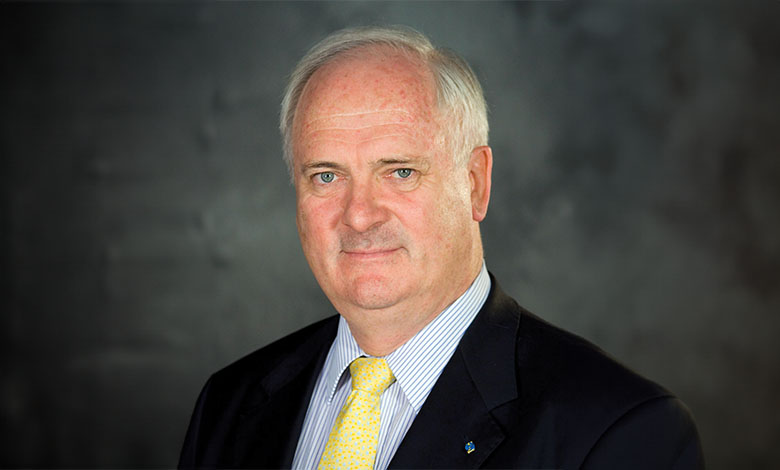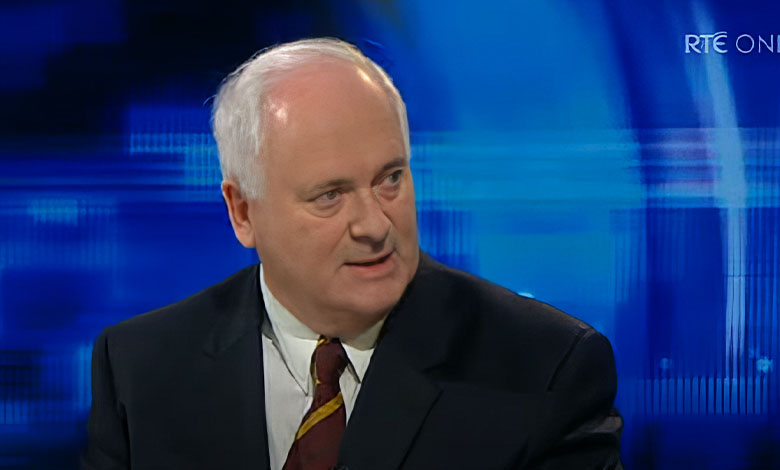Obituary: John Bruton 1947-2024

Tributes have been paid to John Bruton, who served as Taoiseach between 1994 and 1997, as the former Fine Gael leader has died at the age of 76 following a long illness.
Born in May 1947 in Dunboyne, County Meath, Bruton was first elected to the Dáil in the 1969 general election, becoming, at the time, the fifth youngest TD to be elected to the Dáil at the age of 22.
Bruton became Taoiseach in 1994, following the collapse of a coalition between Albert Reynolds’ Fianna Fáil and Dick Spring’s Labour Party.
Able to form a majority government without the need for a new election, Bruton governed for the rest of that Dáil term with a ‘rainbow coalition’ of Fine Gael, the Labour Party, and Democratic Left.
Although characterised as a social conservative when he entered office, Bruton’s years as Taoiseach ended up becoming some of the most consequential in the history of the State. The referendum on the legalisation of divorce successfully passed with Bruton’s support in 1995, marking an initial step in the liberalisation of the State and the decline of the influence of the Catholic Church in Irish society.
Another change came in the kind of tradition Bruton hailed from politically. The son of a wealthy farming family in County Meath, Bruton became the first Taoiseach to remove a longstanding portrait of Pádraig Pearse from the Taoiseach’s office and replaced it with that of his political hero, John Redmond, the leader of the Irish Parliamentary Party who negotiated home rule with the British in the 1910s and led Irish nationalism into the First World War.
Bruton’s unique politics were also reflected in that he hung a painting of former Fianna Fáil Taoiseach Seán Lemass in his office, signifying an opposition to the then-dominant dichotomy of Civil War politics.
Disparagingly referred to as “John unionist” by his Fianna Fáil predecessor as Taoiseach, Albert Reynolds, Bruton was painted by his political opponents as sympathetic to northern unionism and Britain. This is a reputation which was enhanced beyond his years as Taoiseach, with Bruton stating in 2014 that the Easter Rising had been a “mistake”, outlining his belief on an RTÉ debate that the arrival universal suffrage and decolonisation of the British Empire throughout the 20th century would have “inevitably” led to Irish independence.

In spite of this perception and his principled opposition to all political violence, Bruton, when negotiating with then-British Prime Minister John Major on what would culminate in the Good Friday Agreement, strongly criticised the British Government’s then-refusal to negotiate with Sinn Féin. Bruton also negotiated the Anglo-Irish Framework with Major in 1995, although the outworking of this framework further played into the perception that he was sympathetic to northern unionists. He further established a “mutually untrustful” but working relationship with former Sinn Féin president Gerry Adams. However, relations between the pair broke down after the Provisional IRA ended a ceasefire in 1996.
Going into the 1997 election, Bruton’s rainbow coalition was widely expected to win re-election. Although he led Fine Gael to a respectable 54 seats (an increase of nine seats compared to the 1992 election), his partners in the Labour Party lost nearly half of their TDs, which paved the way for Bertie Ahern’s decade in power.
Bruton remained as Fine Gael leader until 2001 when, after serving as party leader for 11 years, his TDs voted ‘no confidence’ in his leadership, replacing the former Taoiseach with Michael Noonan. Noonan went on go lead Fine Gael to the second worst election result in the party’s history in the 2002 general election.
After three years as a Fine Gael backbencher, Bruton, who was a passionate supporter of European integration, resigned from the Dáíl in November 2004 to become the European Union’s Ambassador to the United States. He held this role until retirement in October 2009.
Upon retiring from politics and diplomacy, Bruton remained an active voice in Irish political debate, offering his perspectives on Irish history and how it should be remembered, and giving his support to retaining the Eighth Amendment in the 2018 referendum.
‘A formidable servant’
National politicians have been united in paying tribute to Bruton with Taoiseach and Fine Gael leader Leo Varadkar TD offered heartfelt words, saying that Bruton was “one of the reasons I became involved in politics and joined Fine Gael”.
“The whole Fine Gael family mourns his loss, and he will always be remembered for his service to our party and to the Irish state.”
Tánaiste and Fianna Fáil leader Micheál Martin TD said: “John Bruton was a committed politician full of ideas and energy who worked tirelessly for peace and reconciliation on the island of Ireland. His unwavering commitment and remarkable leadership has left an indelible mark on our nation’s history.”
Opposition leader and Sinn Féin president Mary Lou McDonald TD paid tribute to Bruton’s “many decades of service to the State and to his party”.
Internationally, former British Prime Minister John Major added his tributes, describing Bruton as a “formidable servant of the Irish nation” and “a brave and talented Taoiseach who contributed mightily to the early days of the peace process”.
Bruton passed away surrounded by his family on 6 February 2024, following a long illness at the age of 76. Following a state funeral, Bruton was buried in Rooske Cemetery in his hometown of Dunboyne.
He is survived by his wife, his son, his three daughters, and his grandchildren, as well as his wider family circle.
Ar dheis Dé go raibh a anam.





